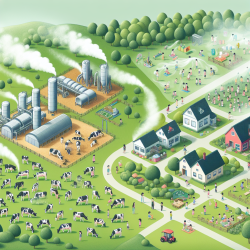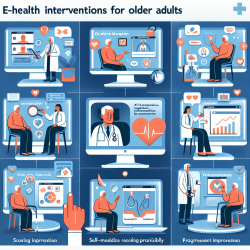Introduction
As a speech-language pathologist deeply invested in data-driven decisions, understanding the environmental factors affecting children's health is crucial. Recent research titled Airborne cow allergen, ammonia, and particulate matter at homes vary with distance to industrial scale dairy operations: an exposure assessment provides valuable insights into how proximity to dairy operations can impact air quality and, consequently, community health. This blog aims to explore these findings and encourage practitioners to consider environmental factors in their practice.
Key Findings from the Study
The study conducted in Yakima Valley, Washington, assessed the impact of dairy operations on nearby communities by measuring airborne contaminants such as particulate matter, ammonia, and cow allergen (Bos d 2) inside and outside homes. The results revealed a significant concentration gradient, with higher levels of these contaminants found in homes within one-quarter mile of dairy facilities compared to those more than three miles away.
- Outdoor Bos d 2, ammonia, and total dust (TD) were 60, eight, and two times higher, respectively, near dairy facilities.
- Indoor concentrations of Bos d 2 and ammonia were approximately 10 and two times higher, respectively, in homes close to dairy operations.
Implications for Practitioners
For speech-language pathologists and other health practitioners, these findings underscore the importance of considering environmental factors when assessing and treating children. Exposure to airborne contaminants can exacerbate respiratory issues, which in turn can affect speech and language development. Practitioners should:
- Be aware of the environmental conditions in the communities they serve.
- Consider environmental exposure when evaluating children with respiratory or speech issues.
- Advocate for policies that protect community health by regulating emissions from industrial operations.
Encouraging Further Research
This study highlights the need for further research into the health effects of environmental contaminants from industrial operations. Practitioners are encouraged to engage with ongoing research efforts and contribute to a broader understanding of how these factors impact child development and health outcomes.
Conclusion
The research provides compelling evidence that proximity to dairy operations significantly affects air quality and potentially community health. By integrating these findings into practice, speech-language pathologists can better support the health and development of children in affected areas.
To read the original research paper, please follow this link: Airborne cow allergen, ammonia and particulate matter at homes vary with distance to industrial scale dairy operations: an exposure assessment.










